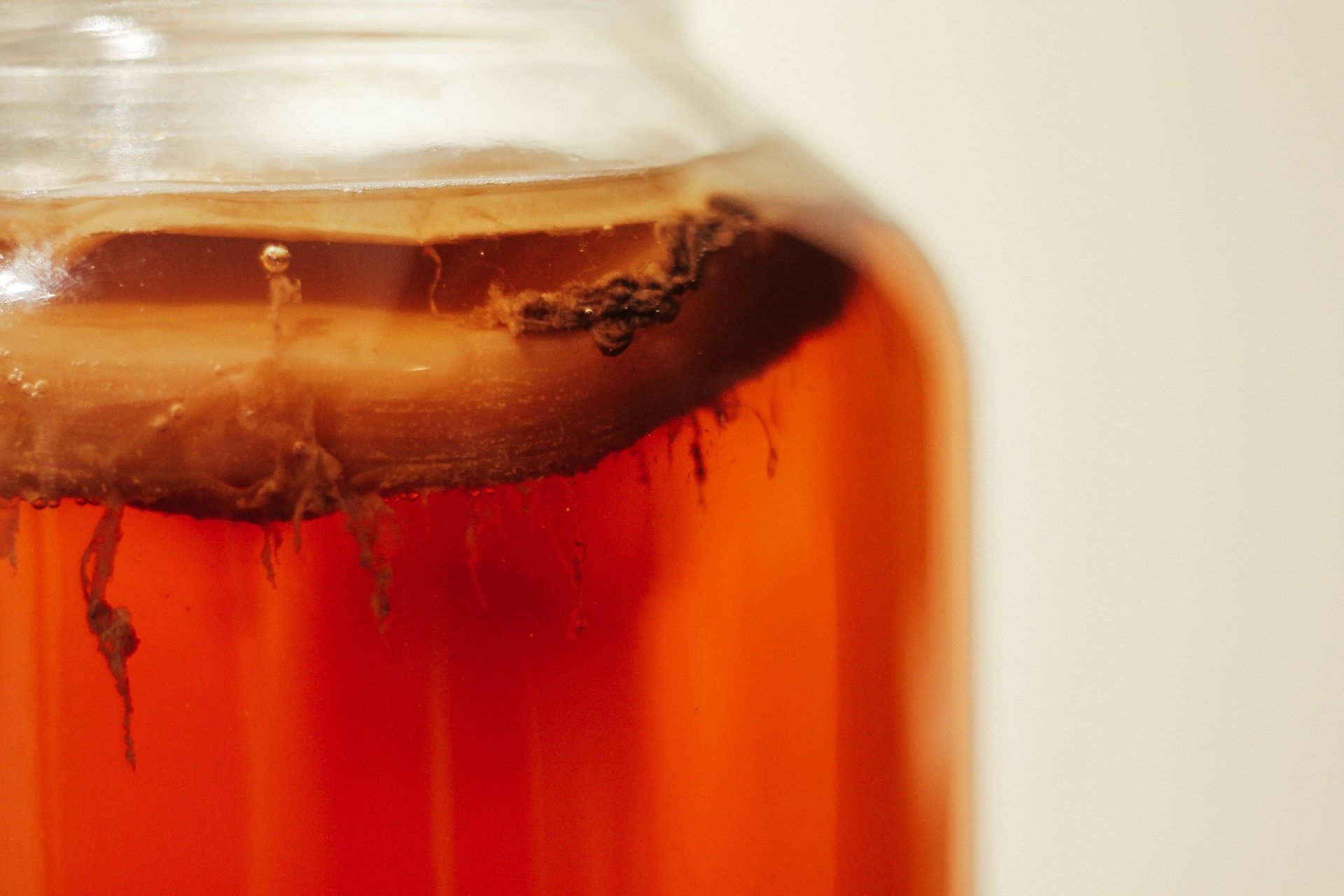14 Alternatives to Bleached Flour (and Why You Should Try Them)
This article first appeared on LivingWithHM.com
There’s a Type 2 diabetes epidemic in America. Nearly 100 million of us live with prediabetes or the full-blown condition, and what’s scary is that many don’t know their risks.1 However, it’s one of the most preventable illnesses, and you don’t need any special skills, oodles of money, or even regular healthcare access. You must, however, know what to avoid. You already know about sugar, but did you know that bleached flour is just as bad, possibly worse?
Furthermore, this stuff lurks in many products, including packaged convenience foods. However, you can learn to avoid it. Best of all, there are plenty of alternatives, many of which will elevate your baking if you live for the kitchen — all while improving your family’s health. What should you try and how will it affect your food’s taste and texture? How can you keep it convenient?
We have your answers. Dig into these 14 alternatives to bleached flour while protecting yourself against what’s arguably America’s top health risk.
What’s the Problem With Bleached Flour?
The problems with bleached flour are twofold. One, it has less of the good stuff your body needs. Two, it may contain traces of a toxin your body doesn’t.
1. Bye Bye to the Good Stuff
Bleached flour comes from wheat. “Hey, wait,” you might think, “That’s a plant-based, healthy food!” That’s correct — in its original form. Wheat consists of three layers:
- Bran
- Germ
- Endosperm
The manufacturing process of bleached flour begins by stripping away the bran and germ. Guess what? That’s where a considerable portion of the nutrients and fiber lie. You miss out on vitamins, but that’s not all.
Fiber helps flour digest more slowly, preventing the steep blood sugar spikes that can predispose you to Type 2 diabetes over time. When you take that away, what remains is a fast-absorbing substance that’s nearly the equivalent of a spoonful of sugar. Yikes.
Then, manufacturers add bleaching agents like benzoyl peroxide directly with the flour and mix gaseous bleaching agents like nitrogen peroxide and chlorine into the freshly-milled stuff.2 That creates another problem.
2. Hello to Alloxan
When you mix chemicals with food, you create byproducts. One of these is alloxan. What’s that? It’s a substance that scientists use to degrade the pancreatic beta cells in laboratory mice.3 Researchers have found trace amounts of this stuff in several brands of bleached flour. Why is it so bad for human health?
Your pancreas is where you make your insulin, particularly your beta cells. That’s right. Each time you eat bleached flour, not only do you spike your blood sugar, predisposing you to Type 2 diabetes. You also consume a chemical that damages the organ responsible for combating these spikes. Statistics suggest the results are not good, leading to increased disease.
How to Recognize Flour on Food Labels
One problem with avoiding bleached flour is you’ll seldom see those two words used on nutrition labels. Instead, you’ll see “wheat flour.” What happens when the average consumer reads, “wheat flour?” That’s right. They think it’s healthy.
Not you. Like Jellystone’s Yogi, you’re smarter than the average bear. But what should you look for?
Instead, look for the words “whole grain” or “whole wheat” on the label.
Pro-tip: The words “contains whole grains” can be misleading. Read the label. It might say wheat flour and then whole wheat flour, indicating that you have a mix of bleached and unbleached stuff in there. You’d have to write to the manufacturer to discern the precise ratio. Stick to whole grain only.
Where Flour Lurks in Food
Bleached flour is everywhere in Western diets. The statistics begin to make sense. Unfortunately, you have to read the labels of more than your loaf of bread. Bleached flour may lurk in the following:
- Baked goods
- Snack foods like pretzels and crackers
- Breading: Processed convenience foods are often full of the stuff — more on this in the FAQs section.
- Pasta
- Gravies
- Cereal
- Sauces
- Meat Substitutes: Pay attention, vegans and vegetarians.
14 Alternatives to Bleached Flour to Experiment With
Fortunately, there’s a wide variety of alternative flours to play with when you cook at home. You’ll also find these used in more healthy convenience foods as people educate themselves and demand alternatives, although you might pay a steeper price. The DIY method keeps your costs low and doubles as a valuable prep — it’s much easier to store flour than fresh bread.
How to Use Flour Substitutes
Please note that alternatives to bleached flour will vary slightly in taste and texture from what you’re used to. However, change can be a good thing. You might find that you like these alternatives better!
Plus, you get another bonus. Remember, bleached flour removes the filling fiber that keeps your appetite at bay. Switching to alternatives will keep you fuller longer, which can stretch your food budget and maybe even help you drop a few unwanted pounds without trying.
Your best method? Experiment! Play with different alternative flours to find your favorites or create a signature blend of two or three favorites. Start with easy swaps, like the breading on oven-baked chicken, and progress to baking.
Here are 14 alternatives to consider.
1. Whole Grain Flour
Whole grain flour doesn’t strip away the bran and germ, giving you much more nutrition. You also maintain the filling fiber that keeps your blood sugar under control, lowering your Type 2 diabetes risk.
2. Almond Flour
If you want to eat more nuts and seeds for your mental health, consider doing so by substituting almond flour. Bleached flour can increase systemic inflammation, which researchers consider as a factor in some anxiety disorders.4
However, that’s not the only reason almond flour benefits mental health. Nuts are high in magnesium, a mineral that may ease symptoms of anxiety and depression.5
3. Spelt Flour
Spelled flour comes from an ancient grain. However, it still contains gluten, so pay attention if you have celiac disease or an intolerance. It’s a primitive relative of modern wheat.
4. Brown Rice Flour
Brown rice is a whole grain while white rice is not. Read labels to ensure you get all the nutrition and fiber.
5. Amaranth Flour
Amaranth is another ancient grain, one preppers in the southwest rejoice over. It grows well and quickly and the leaves are also edible. However, manufacturers grind the grain into a slightly flowery, nutty flour.
6. Oat Flour
Oat flour may or may not be gluten-free, depending on the manufacturing process. If you have a severe intolerance or celiac, look for the words “manufactured in a dedicated gluten-free facility” to protect yourself.
7. Chickpea Flour
Are you a vegetarian or vegan who needs a protein boost? Look to chickpea or garbanzo bean flour. It’s chock-full of the muscle-building macronutrient.
8. Rye Flour
Rye flour has a slightly more bitter taste than wheat. It’s a great source of multiple B vitamins.
9. Coconut Flour
Coconut flour is popular for baking and frying. It has a slightly sweet taste that’s heavenly in muffins or panko breading.
10. Buckwheat Flour
Buckwheat is another alternative to bleached flour that vegans should embrace. Why? It’s one of a handful of plant-based foods that’s a complete protein, giving you all nine essential amino acids your body can’t make itself.6
11. Sorghum Flour
You might recognize this flour from gluten-free labels. It’s a popular alternative to wheat in commercial products prepared for this crowd.
12. Millet Flour
Millet is a small, yellow grain that tastes vaguely reminiscent of corn. As such, it’s great for baking and breading and makes a lovely blend with other alternative flours.
13. Cassava Flour
Cassava is a South American tuber that’s somewhat similar to a sweet potato. It’s used as a staple in many countries and makes flour akin to potato flakes — but more finely ground.
14. Nut Flour
Various nut flours abound, such as hazelnut, macadamia, walnut, and pecan. Although they can be pricey, they’re also full of magnesium and other minerals like zinc and selenium to boost mood and mental health.7
FAQS
Here are your answers to some of the most frequently asked questions about alternative flours.
1. Do Alternative Flours Taste the Same as Bleached Flour?
Bleached flour is bland because manufacturers strip away the stuff that provides flavor. Alternative flours each have their own unique taste. Some varieties, like sorghum, have more of the neutral taste preferred in baked goods, but others add a new twist.
Your best bet is to experiment. You can blend several alternative flours in varying ratios until you find a taste and texture you fall in love with. You might even create unique combos for different dishes, such as almond flour, millet, and sorghum for baking and a coconut-spelt blend for coating fried chicken.
2. Do You Substitute Alternative Flours in the Same Ratio in Recipes?
In general, alternative flours measure up scoop for scoop with unbleached flour. There’s no need to adjust your recipe. You can swap them out cup for cup.
3. What’s the Healthiest Alternative Flour?
Is this a trick question? Just kidding. The healthiest alternative flour for you depends on your unique body and needs. Some blends are higher in protein, making them attractive to vegans, while others contain trace minerals your body needs.8
4. How Do I Avoid Bleached Flour If I Rely on Convenience Foods Because of My Busy Lifestyle?
It’s a tough question. More healthy convenience foods now contain whole grains, but you must read labels. While microwaved meals might cost more, you can often find bread, crackers, and pasta made from whole grain.
Combine that option with snack foods that resemble their natural forms. For example, nearly every convenience store sells mixed nuts, string cheese, and a few assorted fruits. Hit up bulk health food stores when you have time to stock up on non-perishable, natural snacks like trail mix and dried fruit and veggies. These cost more upfront but won’t go stale.
Resolve to Try These Bleached Flour Alternatives
You now know that alternatives to bleached flour play a valuable role in the fight against Type 2 diabetes. One possible reason the condition has reached epidemic levels is because of the adverse health effects of the white stuff.
The sooner you experiment with whole grain and alternative flours, the more quickly you’ll find the varieties you love. Resolve to try these bleached flour alternatives this year and slash your risk of what may be America’s number one health threat.
References:
1. About Prediabetes and Type 2 Diabetes | National Diabetes Prevention Program | CDC. 15 Nov. 2023, https://www.cdc.gov/diabetes/prevention/about-prediabetes.html
2. “Flour Bleaching | Baking Processes.” BAKERpedia, 10 July 2018, https://bakerpedia.com/processes/flour-bleaching/
3. Ganga, S., et. al. “Dark Side of White Flour — Maida.” Indian Association of Health, Research and Welfare. 2020, 11(1-3), 100-105. Retrieved from: https://www.researchgate.net/publication/341394368_Darkside_Of_The_White_Flour_-_Maida
4. Guo, Bingqi, et al. “Neuroinflammation Mechanisms of Neuromodulation Therapies for Anxiety and Depression.” Translational Psychiatry, vol. 13, Jan. 2023, p. 5. PubMed Central, https://doi.org/10.1038/s41398-022-02297-y
5. Nazarinasab, Masoumeh, et al. “Investigating the Effect of Magnesium Supplement in Patients with Major Depressive Disorder under Selective Serotonin Reuptake Inhibitor Treatment.” Journal of Family Medicine and Primary Care, vol. 11, no. 12, Dec. 2022, pp. 7800–05. PubMed Central, https://doi.org/10.4103/jfmpc.jfmpc_1164_22
6. “13 Nearly Complete Protein Sources for Vegetarians and Vegans.” Healthline, 21 Apr. 2020, https://www.healthline.com/nutrition/complete-protein-for-vegans
7. Totten, Melissa S., et al. “Trace Minerals and Anxiety: A Review of Zinc, Copper, Iron, and Selenium.” Dietetics, vol. 2, no. 1, Mar. 2023, pp. 83–103. www.mdpi.com, https://doi.org/10.3390/dietetics2010008
8. Barnes, Mia. “What’s the Healthiest Flour Alternative?” Body+Mind Magazine, 6 Oct. 2021, https://bodymind.com/whats-the-healthiest-alternative-flour/.











